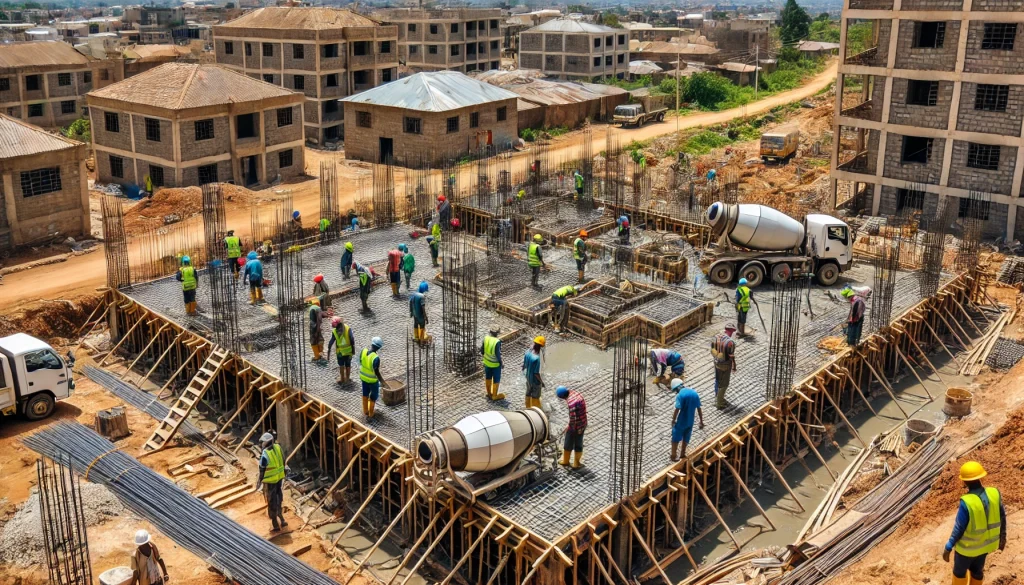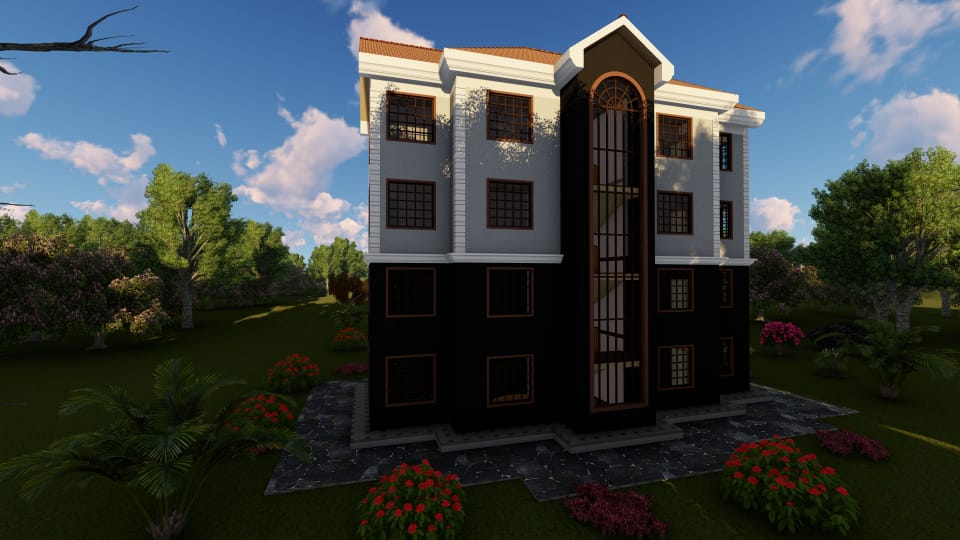Learn how to finance a real estate project in Kenya with equity, loans, SACCOs, REITs & crowdfunding. Step-by-Step Guide, Lender Checklist, and Exit Tips.
Quick Overview: Financing Landscape for Kenyan Property Developers
Snapshot of Common Funders (Banks, SACCOs, REITs, Investors, Crowdfunding)
In Kenya, developers can access funds from several sources, each with unique benefits and challenges. Commercial banks remain the largest financiers, offering structured construction loans with phased disbursement. SACCOs and cooperatives are more flexible and often provide better rates for smaller projects or individuals with strong member ties. Real Estate Investment Trusts (REITs) enable the large-scale pooling of funds for institutional investors and large developers. Meanwhile, private investors and angel funds are useful for joint ventures where developers need capital without going through strict bank procedures. Crowdfunding platforms are also emerging as innovative ways to fund smaller or niche real estate developments.

Typical Developer Funding Mix (Equity + Debt + Alternative)
Most property developers in Kenya use a blended funding model, combining equity, debt, and alternative financing. Equity typically comes from the developer’s savings or land contribution, usually making up 10–30% of the project cost. Debt financing, especially bank loans or SACCO credit, helps cover the bulk of construction expenses. Alternative sources like mezzanine finance, crowdfunding, or REITs fill gaps and provide flexibility when banks alone cannot meet the financing needs. This mix reduces risk and makes the project more attractive to lenders, who prefer to see the developer’s own stake in the venture before releasing funds.
Step 0: Feasibility & Lender-Ready Preparation (What Lenders Expect)
Project Feasibility Checklist (Market Study, BoQ, Timelines)
Before financing is approved, lenders want proof that the project is realistic and profitable. A feasibility study starts with thorough market research, covering demand, location suitability, and expected pricing or rental rates. Developers must also present a Bill of Quantities (BoQ) from a professional quantity surveyor, detailing construction costs accurately. A clear project timeline is equally important, showing how long construction, marketing, and sales will take. These elements not only build lender confidence but also help developers plan effectively and avoid unexpected cost overruns.

Minimum Financial KPIs Lenders Ask For (LTC, LTV, DSCR, Projected IRR)
Banks and investors in Kenya rely heavily on financial ratios to decide whether to finance a project. The Loan-to-Cost (LTC) ratio, often 60–70%, ensures the developer contributes a fair share. Loan-to-Value (LTV) ratios are usually capped at 70%, limiting how much risk the bank takes. The Debt Service Coverage Ratio (DSCR) must be at least 1.2x, showing the project generates enough income to repay debt comfortably. Finally, a projected Internal Rate of Return (IRR) is calculated to measure long-term profitability. These numbers serve as a quick risk test for lenders and reassure them that the project can succeed.
Document Pack Checklist (Title, Valuation, Cashflow Model, Permits)
A complete document pack makes the financing process faster and smoother. Lenders typically require a valid land title deed with proof of ownership, which must be verified before approval. They also request an independent valuation report to confirm the land or property’s worth. Detailed cashflow projections, including repayment schedules and income forecasts, are essential to show sustainability. Approved architectural drawings, building permits, and compliance certificates must also be included. Having all these documents ready avoids delays and increases the likelihood of securing financing.
Equity Options: How to Raise the Developer Contribution
Personal Cash, Land-as-Equity, JV Structures (Developer vs Landowner)
Equity is the foundation of any real estate project in Kenya because lenders want to see that the developer has “skin in the game.” Many developers use personal savings, retained earnings, or the value of land they already own as their equity contribution. Land-as-equity is common, especially when a developer partners with a landowner in a joint venture. In such agreements, the landowner contributes the plot while the developer handles financing and construction. This arrangement reduces upfront cash requirements and aligns both parties’ interests in the project’s success.
Attracting Private Equity & Angels — Investor Pitch Essentials
Private equity firms and angel investors are another strong source of real estate financing in Kenya. To attract them, developers must prepare a professional pitch deck with detailed financial projections, exit strategies, and clear risk management plans. Investors usually look for projects with strong demand, attractive returns, and well-structured agreements. Networking events, industry forums, and introductions through financial advisors can help developers connect with such investors. A strong investor pitch increases credibility and may also provide strategic guidance beyond just funding.

Equity Dilution vs Control: Simple Comparison Table
When taking on investors, developers must consider equity dilution and how it affects control. Giving up too much equity may provide needed funds, but it reduces the developer’s decision-making power. Retaining majority ownership ensures long-term control but may limit access to large-scale capital. Developers should balance ownership against growth potential, often using structured agreements to protect their interests. A simple comparison table of ownership percentages, decision rights, and projected returns can help guide this choice.
Traditional Debt: Bank Construction Loans & Mortgage Takeout
How Construction Loans Work (Disbursement Schedules, Securities)
Construction loans are short-term facilities designed to fund building projects in stages. Banks usually disburse funds in tranches, linked to milestones such as foundation, roofing, or finishing. This system ensures money is only released when work is verified, reducing risk for the bank. Developers must provide securities like land title deeds, debentures, or personal guarantees. The repayment usually begins after full disbursement, though some banks require partial payments during construction.
Typical Bank Requirements & Sample Checklist (Fees, Covenants)
Kenyan banks require several documents and conditions before approving a construction loan. These include a feasibility study, approved building plans, valid permits, and proof of equity contribution. Banks also charge arrangement fees, legal costs, and sometimes monitoring fees for project oversight. Loan covenants may include restrictions on additional borrowing, mandatory insurance, and periodic reporting. Meeting these requirements upfront helps speed up approval and improves the chances of securing favourable terms.
From Construction Loan → Takeout Mortgage (Timing & Triggers)
Once construction is complete, developers often refinance through a takeout mortgage to repay the short-term construction loan. This transition ensures the developer has a longer repayment period, usually 10–20 years, making cash flow management easier. The trigger for takeout financing is typically a certificate of completion, occupancy permits, or proof of rental income. Banks prefer this model because it reduces their risk exposure and provides a structured exit for the construction facility. For developers, it provides stability and lower monthly repayment pressure compared to short-term loans.
Non-Bank Debt & Hybrid Structures (SACCOs, Mezzanine, Bridging)
SACCO/Cooperative Process & Pros/Cons
Savings and Credit Cooperatives (SACCOs) are a popular alternative to banks in Kenya, especially for smaller developers. Members contribute savings, which are then pooled and lent out at lower interest rates compared to commercial banks. The process is usually less bureaucratic, with faster approvals and flexible repayment terms. However, SACCOs may not provide very large amounts of financing for major real estate projects. Developers often combine SACCO funding with other sources to bridge the gap.
Mezzanine Finance Explained — Costs and Risk Profile
Mezzanine financing is a hybrid between debt and equity, commonly used when traditional bank loans are insufficient. It allows lenders to provide funds at higher interest rates, but with the option to convert debt into equity if repayments are missed. This makes it riskier for the borrower but attractive to investors seeking higher returns. In Kenya, mezzanine finance is still developing but has been used in large-scale property and infrastructure projects. Developers should carefully weigh the higher cost against the ability to unlock bigger deals.
Bridging Loans and Short-Term Working Capital Solutions
Bridging loans are short-term facilities designed to “bridge the gap” between immediate project expenses and longer-term financing. They are particularly useful when a developer needs liquidity to cover land deposits, approvals, or urgent construction costs. These loans are typically expensive due to high interest rates and short repayment terms, but they provide critical flexibility. In Kenya, private lenders and specialised finance firms often provide bridging facilities. Developers should use them strategically to avoid being trapped by excessive repayment obligations.

Alternative Finance: REITs, Crowdfunding, Bonds & Capital Markets
Using REITs / Property Funds for Development Capital (How It Works)
Real Estate Investment Trusts (REITs) are regulated investment vehicles that pool capital from multiple investors into property projects. In Kenya, REITs are managed by licensed firms and offer developers access to large-scale funding without relying solely on banks. A Development REIT (D-REIT) allows funds to be directed into ongoing construction, while Income REITs focus on rental properties. The benefit is tapping into institutional and retail investors while spreading project risk. However, the regulatory requirements can be complex and costly for smaller developers.
Crowdfunding Platforms: Structure, Minimums, and Kenyan Examples
Real estate crowdfunding allows multiple small investors to contribute toward a project through an online platform. This democratizes access to property investment while helping developers raise funds quickly. Typical structures involve pooled contributions in exchange for equity shares or debt returns. In Kenya, platforms such as HassConsult’s MyHouse and emerging fintech firms are experimenting with crowdfunding models. Minimum investment thresholds are usually low, making it attractive for young investors, though developers must ensure compliance with CMA guidelines.
Municipal / Corporate Bonds and PPP Options — When to Consider Them
Larger-scale projects may benefit from issuing bonds or entering public-private partnerships (PPPs). Municipal bonds allow counties or local authorities to raise funds for infrastructure-linked projects, while corporate bonds help developers tap capital markets directly. These instruments attract institutional investors but require strict disclosure, credit ratings, and strong governance structures. PPPs, meanwhile, are increasingly common in housing and infrastructure projects in Kenya, especially under the Affordable Housing Program. Developers with experience and strong partners can use these channels for major developments.
Related post: The Impact of Inflation on Property Prices in Kenya
Structuring, Security & Risk Mitigation (Legal + Financial)
Optimal Company/JV Structures and Shareholder Agreements
A solid legal structure is essential for protecting all parties in a real estate project. Many developers register Special Purpose Vehicles (SPVs) or limited companies to separate project risk from personal assets. Joint ventures with landowners or investors require clear shareholder agreements that define roles, profit-sharing, and exit terms. These agreements also help avoid disputes that could stall construction or financing. In Kenya, legal advisors familiar with property law are crucial for drafting enforceable documents.
Collateral, Guarantees, and Security Packages (Land, Receivables)
Lenders always demand collateral to secure loans, and real estate offers strong asset-backed options. Typical securities include land titles, property under development, or future receivables from sales. Personal or corporate guarantees may also be required, adding an extra layer of assurance for financiers. A well-structured security package improves a developer’s chances of approval and better terms. It also reduces risk for the lender, making the relationship more sustainable.
Insurance (Construction All-Risk), Performance Bonds, and Retention Mechanics
Risk mitigation goes beyond collateral, and insurance plays a central role in protecting projects. Construction all-risk insurance covers damages, accidents, or natural disasters during building. Performance bonds guarantee that contractors deliver on time and to specification, while retention mechanics ensure funds are held back until all defects are corrected. Together, these tools safeguard both lenders and developers. In Kenya, many institutions require these protections before disbursing funds, making them non-negotiable in structured financing.
Related post: What Kind of Apartment Can I Build with Kshs 70M in Isinya?
Pricing, Negotiation & Lender Selection (Practical Tactics)
How to Compare Offers (Interest, Margins, Arrangement Fees, Covenants)
When choosing a financing option, it’s important to compare more than just the headline interest rate. Developers should review the total cost of capital, which includes arrangement fees, legal charges, insurance costs, and hidden margins. Covenants—such as restrictions on dividend payouts or project milestones—can also affect flexibility. By putting offers side by side in a comparison table, developers can spot the true cost of each option. This prevents surprises later and ensures the chosen loan supports, rather than restricts, the project.
Negotiation Tactics (Loan Tenor, Grace Periods, Interest Reset)
Lenders expect negotiation, and developers who prepare well can secure better terms. Asking for a longer loan tenor spreads repayments over time, easing cashflow pressure. Grace periods on interest or principal allow projects to reach sales or rental revenue before repayment kicks in. Developers should also clarify if the interest rate has reset clauses, which could increase costs if market conditions change. Successful negotiation often comes down to presenting strong feasibility data and demonstrating a clear repayment plan.
When to Use a Financial Advisor or Broker
Not every developer has the expertise or network to navigate complex financing structures. Financial advisors or mortgage brokers can help negotiate with banks, private lenders, and investors. They understand the terms, risks, and hidden costs that developers might miss, ensuring the best possible deal. In Kenya, brokers can also provide access to smaller or emerging lenders that developers may not know about. The cost of hiring one is often outweighed by the savings and improved loan structure.
Related post: What Apartment Can You Build with Ksh 40 Million in Syokimau? Units, Rental Income & ROI Explained
Execution: Disbursements, Monitoring & Compliance During Build
Typical Drawdown Schedule Example & Milestone Checks
Once financing is approved, lenders rarely release the full loan upfront. Instead, funds are disbursed in phases tied to construction milestones such as foundation, roofing, or finishing. This ensures that money is used for actual progress and reduces the risk of diversion. For example, a developer might receive 20% at groundbreaking, 30% after structural completion, and the rest during final works. Lenders also send inspectors to verify milestones before releasing the next tranche.
Cashflow Monitoring, Reporting Packs for Lenders (What to Send, Frequency)
Related post: Affordable Housing Projects in Kenya – Opportunities & How to Benefit
Developers must maintain transparent communication with lenders throughout the build. Most lenders require regular reporting packs that include cash flow statements, updated budgets, and progress photos. These reports are usually submitted monthly or quarterly, depending on the agreement. Consistent updates build trust and can make lenders more flexible when challenges arise. Strong financial monitoring also helps developers catch potential shortfalls before they escalate into major problems.
Handling Cost Overruns and Accessing Contingency Funds
Cost overruns are common in real estate projects due to inflation, design changes, or delays. Developers should build a contingency reserve—typically 5–10% of project costs—to cover unexpected expenses. Some lenders also provide access to contingency funds if proper justification is provided. Handling overruns proactively prevents stoppages that could erode buyer confidence or increase penalties. Clear communication with the lender and quick adjustments to budgets are critical for keeping the project on track.
Related post: Affordable 800 Sq Ft 2 Bedroom Apartment Plans in Kenya
Exit & Post-Construction: Takeout, Sale, Leasing and Refinancing
Takeout Strategies (Mortgage Refinancing, REIT Exit, Sale to Investor)
The exit phase determines how a developer clears the initial debt and secures profits. One option is mortgage refinancing, where completed units are transferred to end buyers through individual mortgages, repaying the construction loan. Another is selling the project to a Real Estate Investment Trust (REIT) or institutional investor, which provides immediate liquidity. Developers may also sell the entire property in bulk to a single investor, especially for commercial buildings. Each takeout strategy depends on the project’s scale, market demand, and financing structure.
Timing the Exit to Optimise Returns & Debt Service
Timing is everything in real estate exits. Selling or refinancing too early may result in undervaluation, while waiting too long increases interest and holding costs. Developers should align exit timing with market cycles, ensuring high occupancy rates or strong pre-sales before approaching lenders or investors. A well-timed exit reduces debt burden and maximises returns. In Kenya’s property market, monitoring demand trends, mortgage rates, and investor appetite helps developers strike at the right moment.
Post-Project Compliance, Tax Considerations and Stamp Duty Basics
Even after the project is completed, compliance obligations remain. Developers must settle taxes such as capital gains tax, corporate tax on profits, and VAT on sales if applicable. Buyers also pay stamp duty, which developers should clearly communicate during the sale process. In addition, post-project audits or environmental compliance checks may be required. Managing these obligations carefully avoids legal disputes and protects the developer’s reputation in future projects.
Related post: Kenya Real Estate Market Trends 2025
Conclusion
Financing a real estate project in Kenya requires careful planning, smart structuring, and the right mix of funding sources. From equity contributions to bank loans, SACCOs, mezzanine finance, and alternative options like REITs and crowdfunding, developers have multiple pathways to raise capital. Success comes from preparing lender-ready documents, negotiating strong terms, and managing compliance throughout the build.
By understanding the full financing landscape, developers can avoid costly mistakes and unlock growth opportunities. Whether your goal is residential, commercial, or mixed-use, the right financing strategy ensures your project gets completed and delivers long-term returns. In short, knowing how to finance a real estate project in Kenya is the first step toward sustainable property development.
Related post: Why Invest in Kenyan Real Estate Today
Frequently Asked Questions (FAQ)
- What is the minimum developer equity required for financing in Kenya?
Most banks require developers to contribute at least 20–30% equity before approving loans.
- Can land be used as equity when financing a project?
Yes, land can count as part of the developer’s equity contribution if properly valued and documented.
- How do SACCO loans compare to bank loans for developers?
SACCO loans usually have lower interest rates and simpler approval processes, but may not offer large amounts.
- What documents do lenders in Kenya require before approving construction loans?
Common documents include a title deed, valuation report, feasibility study, BoQ, cashflow projections, and permits.
- Are there crowdfunding platforms for real estate in Kenya?
Yes, some platforms allow small investors to pool funds into property projects, though regulation is still evolving.
- How do developers handle cost overruns during construction?
By setting aside contingency reserves (5–10% of project costs) and negotiating for additional funds with lenders if necessary.
- What exit strategies are common after project completion?
Typical exits include refinancing through mortgages, selling to investors, or leasing for rental income.
- What taxes should developers expect after completing a real estate project?
Key obligations include corporate tax on profits, VAT (where applicable), capital gains tax, and buyer stamp duty..





31 thoughts on “How to Finance a Real Estate Project in Kenya”